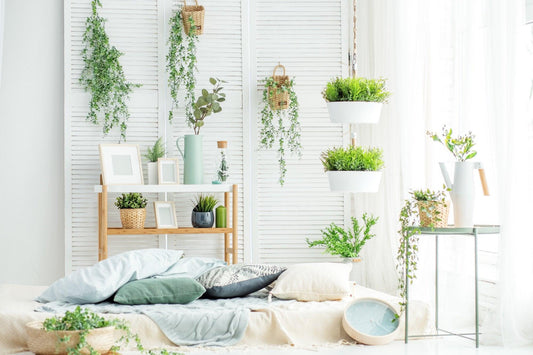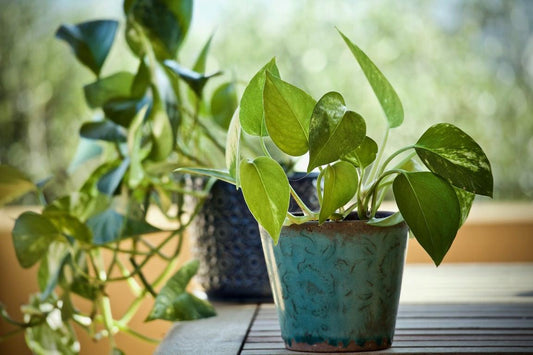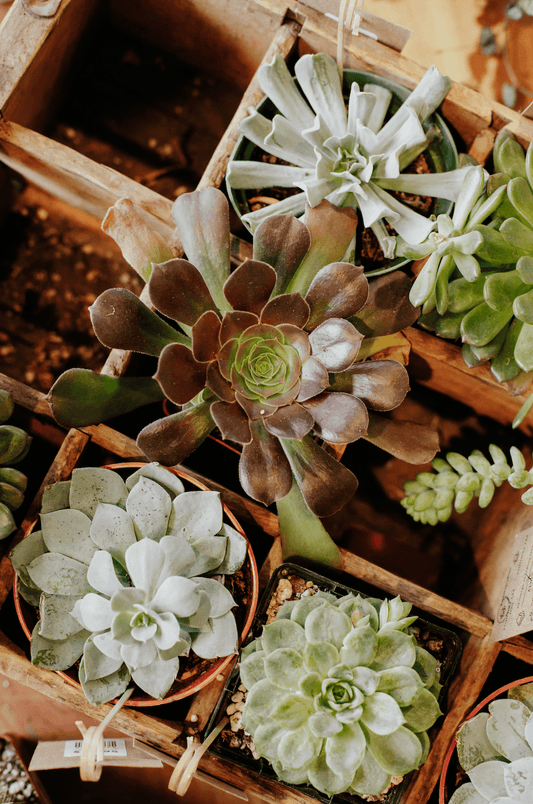MARANTA PRAYER PLANT
How to Care for the MARANTA PRAYER PLANT
Overview
A gorgeous, distinguishable tropical, the Maranta Prayer Plant is famous for its unique foliage. The red variety, for example, has dark green leaves with yellow splotches down the midrib and red feathered veins. Named for Italian physician and botanist Bartolomeo Maranta, its alternate name, the Prayer Plant, comes from one of its most distinct qualities. The Maranta’s leaves lie flat during the daytime, then fold up at night, moving depending on light exposure. It’s a slow grower that’s lovely to look at and easy to care for, and great to display in hanging pots.
Native to South America, this plant can grow up to 6-12 feet tall in the greenhouse type conditions it likes: warm, moist airflow and plenty of fertilizer (every two weeks from early spring through fall). There are many varieties,that present all sorts of different colors and patterns. These plants are often grouped together with the Calathea because of their unique movement properties, but they are each a separate genus within the Marantacaae family. They both perform nyctinasty—a nighttime response in which the leaves fold up in ‘prayer’—the Maranta’s leaves are primarily oval, while those of the Calathea come in a wide variety of shapes. Marantas are also more tolerant of the cold.


Profile
The easiest way to propagate Marantas is to divide up the plant while repotting. Work the roots apart carefully, ensuring each division has a good mass of roots and stems. Plant into shallow pots and keep in humid conditions until new growth shows. You may also propogate Marantas via nodes. Cut between two established nodes on your Maranta, and place one end in water until roots develop. You may then plant your new cutting into soil and care for it like an established plant.
Though it’s still best to keep your plants out of reach from your pets and kids, you won’t have to worry too much about the Maranta Prayer Plant, as it is non-toxic to dogs, cats, and humans.




Low light
Place your Maranta in a spot where it can receive bright, indirect light, either hanging up or in a standing pot. These plants can also tolerate lower light conditions, especially those varieties that present with red undersode to their leaves. If they enter dormancy and slow their growth, simply put them back in bright light to maintain growth and plant health. Never place them in direct sunlight as the leaves may burn or develop color bleached spots.

Occasional
Marantas are not picky with regard to soil; most well-draining potting soils will do the job. They are sensitive to tap water, though, so filtered water or water left out overnight is best for watering. Water when the top 25% of the soil is dry, and always discard what has accumulated in the saucer to avoid root rot. These plants thrive in humid environments, so mist regularly, or keep nearby a humidifier, and keep temperatures in their environment between 65-85°F.

Easy breezy
Prune your Maranta to encourage fuller growth and a bushier appearance, making sure to clip stems right above the leaf node if you want to propogate off of your cuttings.

Pet Friendly
FREQUENTLY ASKED QUESTIONS (FAQs)
on MARANTA PRAYER PLANT
Why are there spots on my Maranta?
This is likely due to a water quality issue. If you use a water softener, there may be too much fluoride, salt, or chlorine. But if the spots spread and become tan with yellow halos, this may be a fungal infection. You can create your own fungicide with 1-2 tablespoons of baking soda and 1-2 teaspoons of mineral oil. Spray daily until the spots no longer appear.
Why is my Maranta not praying?
Healthy Prayer Plants tend to move their leaves and stems throughout the day. If your Maranta starts behaving differently, there’s a chance something may be wrong. Most of the time, this is due to too little light or the soil or potting mix is getting too dry. Simply move it to an area where it can get bright, indirect sunlight.




